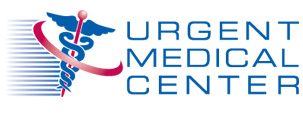 Four common sleep disorders include narcolepsy, restless legs syndrome, insomnia, and sleep apnea. Thankfully, there are treatment options for all.
Four common sleep disorders include narcolepsy, restless legs syndrome, insomnia, and sleep apnea. Thankfully, there are treatment options for all.
Sleep disorders are classified as any condition that prevents one from getting a good night’s sleep on a regular basis, resulting in dysfunction and lethargy. 70 million Americans struggle with some sort of sleep disorder. There are 80 different known and classified types of sleep disorders. Out of the 80 different classifications, some are more common than others. 4 of the most common sleep disorders include narcolepsy, restless legs syndrome, insomnia, and sleep apnea.
Are you struggling to sleep every night? Do you wake up exhausted instead of refreshed? Sleep is vital to your health, happiness and even overall success. Without sleep you don’t look, feel or function your best and you become far more susceptible to a wide range of illnesses. Identifying the cause of your sleep disorder and getting the proper treatment is fundamental.
Here is a closer look at 4 of the most common sleep disorders, as well as potential treatment methods to help you score a better night’s sleep.
1. Insomnia
Insomnia is a common sleep disorder classified by inability or difficulty falling and staying asleep throughout the night. 50% of American adults suffer from insomnia from time to time, but 1 in 10 adults suffer from chronic insomnia. Insomnia is considered chronic if it persists for three nights out of every week for one month or more.
Symptoms of Insomnia:
- Restless, struggling to fall asleep at night and/or waking frequently throughout the night.
- Waking up very early in the morning unable to sleep in any longer.
- Feeling un-refreshed after a full night in bed.
- Issues with fatigue, concentration, moodiness.
Insomnia Treatment
There are many forms of treatment available to help those suffering from insomnia. Options range to include relaxation training, such as taking yoga classes, and medical treatments, such as taking prescription medications. Talking to a doctor about your personal insomnia will help identify the best treatment option for you.
2. Restless Leg Syndrome
Restless leg syndrome (RLS) is another common sleep problem impacting many Americans. It produces an intense urge to move your legs, often indescribable to someone that hasn’t experienced it first hand. RLS is common in patients that sit for prolonged periods of time either at a disk or behind the wheel of a car. RLS is most common at night, which makes it rather difficult to fall asleep.
Symptoms of RLS:
- The irresistible urge to move your legs when lying down or trying to fall asleep.
- Irritability, and never feeling fully rested.
- Reduced concentration
- The irresistible urge to walk around and shake your legs out.
RLS Treatment Options
As of now, there is no known cure for RLS but there are countless treatment options. A doctor can run tests to see if you are low in iron and give you a supplement if you are. Other ways to treat RLS include changing your diet and lifestyle, removing alcohol from your diet after 6 PM, and swapping out medications you are currently taking known to cause RLS.
3. Sleep Apnea
Sleep Apnea is a common sleep disorder with the potential to be pretty serious. Someone with sleep apnea struggles with breathing during sleep, which often forces him or her to wake up while sleeping. If sleep apnea is left untreated, you will stop breathing throughout the night, causing you to frequently wake up out of a deep sleep. This disrupts sleep cycles and prevents you from getting the proper amount of rest.
There are two forms of sleep apnea: Obstructive sleep apnea (OSA) and central sleep apnea (CSA). OSA is the most common, and is caused when the airways are blocked by a collapse of tissues near the back of the throat. CSA cuts off breathing as well, but it is related to the brain actually shutting off and forgetting to breath. CSA is called ‘central’ sleep apnea because it relates directly to your central nervous system.
Symptoms of Sleep Apnea:
- Fatigued and tired throughout the day.
- Waking up gasping for air throughout the night.
Sleep Apnea Treatment Options:
Mild cases of sleep apnea may be cured with simple lifestyle changes. In more severe cases there are certain devices that can be used to keep airways open and surgery is also a potential option. There are also therapy-related options that prove successful for many patients.
4. Narcolepsy
Narcolepsy is a unique sleep disorder that impacts your ability to control when you are awake and when you fall asleep. If you have narcolepsy you may fall asleep at any time of the day and during any activity. Narcolepsy typically starts between 15 and 25-years of age, but can show up at any time throughout life.
Symptoms of Narcolepsy:
- Uncontrollably falling asleep in the middle of activities.
- Extreme lethargy and exhaustion for no apparent reason.
- Some experience muscle weakness when they laugh, cry, or express other emotions.
Narcolepsy Treatment Options
There are a lot of available options to help treat narcolepsy, including prescription medications, life style changes and other therapies.
Having troubles sleeping or feeling well rested? Visit Urgent Medical Center today to diagnose your sleep disorder and start a treatment regimen that works for you. A good night’s sleep is possible, we promise!
Sources: Mayo Clinic, Cleveland Clinic, RLS




